#st. petri
Explore tagged Tumblr posts
Note
would you do qcard...... the silly old men..... If u want to ofc!

fave ship dynamic fr (rabbid omnipotent guy and annoyed human), tysm for your request :)))
#i feel like q studies picard like a germ in a petri dish#they're so silly#star trek#abbycadoodle art#star trek tng#st tng#q tng#jean luc picard#captain picard#qcard#star trek fanart#star trek art#star trek the next generation
827 notes
·
View notes
Text

The iron fence at St. Petri Läroverk on Fersens väg, Malmö - Thomas Strömdahl , 1984.
Swedish , b. 1952 -
Oil on canvas , 77 x 58 cm.
#Thomas Strömdahl#swedish artist#street scenery#iron fence#Malmö#Sweden#St. Petri Läroverk#Fersens väg
91 notes
·
View notes
Text


By Courtney Mares
9 November 2024
For the first time in over a century, the historic Chair of St. Peter, a wooden throne symbolizing the pope’s magisterial authority, has been removed from its gilded bronze reliquary in St. Peter’s Basilica to be displayed for public veneration.
Pilgrims and visitors can now behold this storied relic directly in front of the basilica’s main altar, just above the tomb of St. Peter, where it will remain on display until December 8, the Solemnity of the Immaculate Conception.
According to Pietro Zander, Head of the Necropolis and Artistic Heritage Section of the Vatican:
"The last major public viewing of the chair occurred in 1867, when Pope Pius IX exposed the Chair of Peter for the veneration of the faithful for 12 days on the 1,800th anniversary of the martyrdoms of St. Peter and St. Paul."
It was the first time that the centuries-old wooden throne had been exhibited to the public since 1666 when it was first encased within Gian Lorenzo Bernini’s monumental bronze sculpture under the stained-glass Dove of the Holy Spirit window at the basilica’s apse.
Formally known as the Cathedra Sancti Petri Apostoli, or more simply as Cathedra Petri, the chair has held a revered place in Catholic tradition over the centuries, representing papal authority from St. Peter to the present.

“The chair is meant to be understood as the teacher’s ‘cathedra,’” art historian Elizabeth Lev told CNA.
“It symbolizes the pope’s duty to hand down the teaching of Christ from generation to generation.”
She explained:
“It’s antiquity [ninth century] speaks to a papacy that has endured through the ages — from St. Peter who governed a church on the run trying to evangelize with the might of the Roman Empire trying to shut him down, to the establishment of the Catholic Church and its setting down of roots in the Eternal City, to our 266th successor of St. Peter, Pope Francis.”
A Storied History

The wooden chair itself is steeped in history.
According to the Vatican, the wooden seat was likely given by the Holy Roman Emperor Charles the Bald to Pope John VIII in A.D. 875 for the emperor’s Christmas coronation in the old St. Peter’s Basilica.
A depiction of the emperor appears on the crossbeam of the chair, and its ivory panels illustrate the labors of Hercules along with other scenes from Greek mythology.
The informational sign near the chair in St. Peter’s Basilica informs visitors that “shortly after the year 1000, the Cathedra Petri began to be venerated as a relic of the seat used by the apostle Peter when he preached the Gospel first in Antioch and then in Rome.”
The Fabric of St. Peter, the organization responsible for the basilica’s upkeep, maintains:
“It cannot be ruled out that this ninth-century imperial seat may have later incorporated the panel depicting the labors of Hercules, which perhaps originally belonged to an earlier and more ancient papal seat.”
Before returning the chair to its place within Bernini’s monumental reliquary, Vatican experts will conduct a series of diagnostic tests with the Vatican Museums’ Cabinet of Scientific Research.
The ancient seat was last removed and studied from 1969 to 1974 under Pope Paul VI but was not shown to the public.
The recent restoration of Bernini’s works in the basilica, funded by the Knights of Columbus in preparation for the Catholic Church’s 2025 Jubilee Year, made it possible for the chair to be moved from the bronze sculpture in August.
Pope Francis got a sneak peak of the relic in early October and a photo of the moment — showing him sitting in a wheelchair before the Chair of St. Peter — quickly went viral.
Afterward, the pope requested that the relic be displayed for public veneration.

Francis ultimately decided that the Chair of St. Peter — a symbol of the Church’s unity under the instruction of Christ — would be unveiled for the public at the closing Mass for the Synod on Synodality.
“Pope Francis has been exceptionally generous to the faithful about displaying relics,” Lev said.
“He brought out the bones of St. Peter shortly after his election, he had the Shroud of Turin on view in 2015, and now he has taken the Chair of Peter out for veneration in the basilica.”
“In our virtual age, where much confusion reigns between what is real and what is not, Pope Francis has encouraged us to come face to face with these ancient witnesses of our faith and our traditions.”
Feast of the Chair of St. Peter

The Feast of the Chair of St. Peter, celebrated each year on February 22, dates back to the fourth century.
St. Jerome (A.D. 347–420) spoke of his respect for the “Chair of Peter,” writing in a letter:
“I follow no leader save Christ, so I enter into communion with … the Chair of Peter, for this I know is the rock upon which the Church is built.”
As Pope Benedict XVI explained in a 2006 catechesis:
“‘Cathedra’ literally means the established seat of the bishop, placed in the mother church of a diocese, which for this reason is known as a ‘cathedral.”
“It is the symbol of the bishop’s authority and in particular, of his ‘magisterium,’ that is, the evangelical teaching which, as a successor of the apostles, he is called to safeguard and to transmit to the Christian community,” he said.
When a bishop takes possession of the particular Church that has been entrusted to him, he sits on the cathedra, Benedict explained:
“From this seat, as teacher and pastor, he will guide the journey of the faithful in faith, hope, and charity.”
“The Church’s first ‘seat’ was the upper room, and it is likely that a special place was reserved for Simon Peter in that room where Mary, mother of Jesus, also prayed with the disciples,” he added.
Benedict XVI described Peter’s ministry as a journey from Jerusalem to Antioch, where he served as bishop, and ultimately to Rome.
He noted that the See of Rome, where Peter ultimately “ended his race at the service of the Gospel with martyrdom,” became recognized as the seat of his successors, with the cathedra representing the mission entrusted to Peter by Christ.
“So it is that the See of Rome, which had received the greatest of honors, also has the honor that Christ entrusted to Peter of being at the service of all the particular Churches for the edification and unity of the entire people of God,” he said.
Bernini’s Baroque Masterpiece

Bernini’s monumental reliquary for the chair, commissioned by Pope Alexander VII and completed in 1666, is one of the most iconic artworks in St. Peter’s Basilica.
Bernini encased the wooden relic within a bronze-gilded throne, dramatically raised and crowned by a stained-glass depiction of the Holy Spirit, symbolized as a dove, surrounded by sculpted angels.
The bronze throne is supported by massive statues of four doctors of the Church — two from the West, St. Augustine and St. Ambrose, and two from the East, St. John Chrysostom and St. Athanasius.
It is symbolizing the unity of the Church through the ages, bringing together the teachings of both the Latin and Greek Church Fathers.
And at the top of the throne, cherubs hold up a papal tiara and keys symbolizing papal authority.
On the chair itself, there are three gold bas-reliefs representing the Gospel episodes: "consignment of the keys" (Matthew 16:19), “feed my sheep” (John 21:17), and the "washing of the feet" (John 13:1-17).
The ongoing restoration of Bernini’s monument at the Altar of the Chair, along with the recently finished restoration of the baldacchino, is significant not only in light of the 2025 Jubilee Year but also the upcoming 400th anniversary of the Consecration of the Current St. Peter’s Basilica in 2026.
Benedict XVI said:
“Celebrating the ‘Chair’ of Peter means attributing a strong spiritual significance to it and recognizing it as a privileged sign of the love of God, the eternal Good Shepherd, who wanted to gather his whole Church and lead her on the path of salvation.”

#Chair of St. Peter#St. Peter’s Basilica#Vatican#gilded bronze reliquary#St. Peter#Solemnity of the Immaculate Conception#Pope Pius IX#Necropolis and Artistic Heritage Section#Gian Lorenzo Bernini#Dove of the Holy Spirit#Cathedra Sancti Petri Apostoli#Cathedra Petri#wooden chair#Holy Roman Emperor Charles the Bald#Pope John VIII#Fabric of St. Peter#Vatican Museum#Cabinet of Scientific Research#Pope Paul VI#Knights of Columbus#2025 Jubilee Year#Synod on Synodality#Feast of the Chair of St. Peter#St. Jerome#See of Rome#Pope Alexander VII#iconic artworks#Altar of the Chair#baldacchino
9 notes
·
View notes
Text
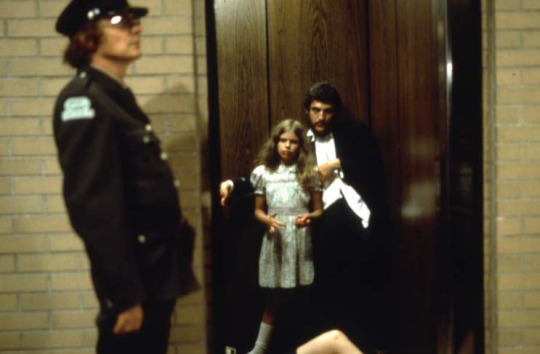
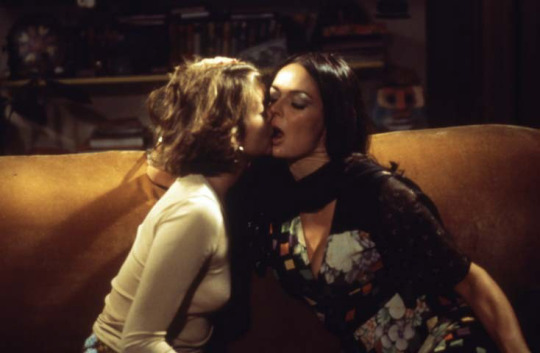
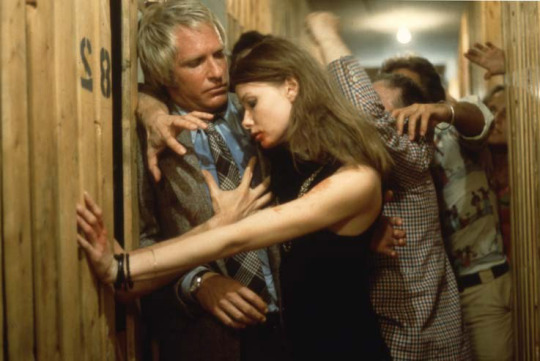
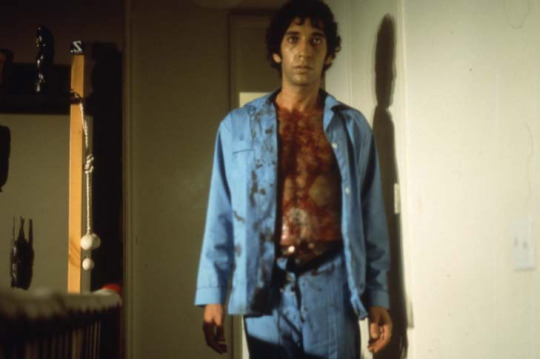
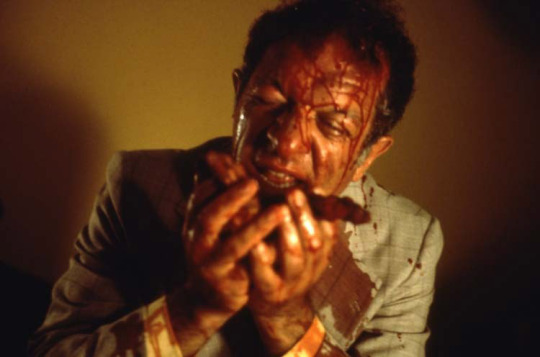

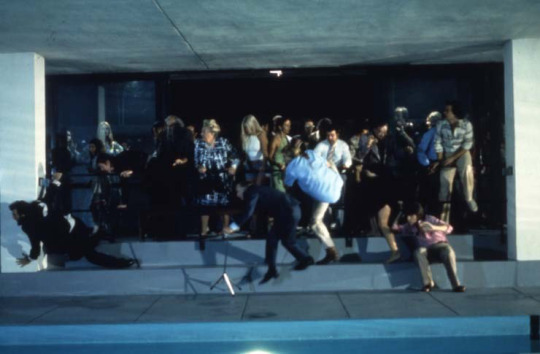
s h i v e r s, 1975 🎬 dir. david cronenberg
#film#horror#body horror#canadian cinema#Shivers#Shivers 1975#david cronenberg#Paul Hampton#Joe Silver#Allan Kolman#Susan Petrie#barbara steele#lynn lowry#Wally Martin#Roger St. Luc#Rollo Linsky#Nicholas Tudor#Janine Tudor#Betts#Nurse Forsythe#Doorman
17 notes
·
View notes
Text

Faith 🕯️
Instagram // Twitter // Threads // Bluesky // VK // Cara // Mastodon
#artists on tumblr#illustration#architecture#architecture illustration#dark academia aesthetic#dark academia#procreate#sigurd lewerentz#brutalism#churches#sankt petri kyrka#st peter’s klippan#klippan#sweden#modernist architecture#cyhsal
16 notes
·
View notes
Video
Eine schöne Kirche in Buxtehude "St. Petri"
0 notes
Text
The Writers of BtVS
So because I'm a nerd, and because I was curious, I compiled a list of the credited Buffy writers and their episodes, mostly to check for their own consistency, haha. And because I thought it was interesting enough to share:
WRITERS:
Joss Whedon
Welcome to the Hellmouth
The Harvest
Nightmares (with David Greenwalt)
Out of Mind, Out of Sight (with Ashley Gable and Thomas A. Swyden)
Prophecy Girl
When She Was Bad
School Hard (with David Greenwalt)
Lie to Me
Ted (with David Greenwalt)
Innocence
Becoming, Part 1
Becoming, Part 2
Anne
Amends
Doppelgangland
Graduation Day, Part 1
Graduation Day, Part 2
The Freshman
Hush
Who Are You?
Restless
Family
The Body
The Gift
Once More With Feeling
Lessons
Chosen
Dana Reston
Witch
David Greenwalt
Teacher’s Pet
Angel
Nightmares (with Joss Whedon)
School Hard (with Joss Whedon)
Reptile Boy
Ted (with Joss Whedon)
Faith, Hope, and Trick
Homecoming
Rob Des Hotel & Dean Batali
Never Kill a Boy on the First Date
The Puppet Show
The Dark Age
Phases
Killed By Death
Matt Kiene
The Pack
Inca Mummy Girl (with Joe Reinkemeyer)
Ashley Gable and Thomas A. Swyden
I, Robot… You, Jane
Out of Mind, Out of Sight (with Joss Whedon)
Ty King
Some Assembly Required
Passion
Joe Reinkemeyer
Inca Mummy Girl (with Matt Kiene)
Carl Ellsworth
Halloween
Howard Gordon
What’s My Line? Part 1 (with Marti Noxon)
Marti Noxon
What’s My Line? Part 1 (with Howard Gordon)
What’s My Line? Part 2
Bad Eggs
Surprise
Bewitched, Bothered and Bewildered
I Only Have Eyes For You
Dead Man’s Party
Beauty and the Beasts
The Wish
Consequences
The Prom
Living Conditions
Wild at Heart
Doomed (with David Fury and Jane Espenson)
Goodbye Iowa
New Moon Rising
Buffy vs. Dracula
Into the Woods
Forever
Bargaining, Part 1
Wrecked
Villains
Bring on the Night (with Douglas Petrie)
Elin Hampton
Go Fish (with David Fury)
David Fury
Go Fish (with Elin Hampton)
Helpless
Choices
Fear Itself
Doomed (with Marti Noxon and Jane Espenson)
The I in Team
Primeval
Real Me
Shadow
Crush
Bargaining, Part 2
Life Serial (with Jane Espenson)
Gone
Grave
Sleeper (with Jane Espenson)
Showtime
Lies My Parents Told Me (with Drew Goddard)
Thania St. John
Gingerbread (with Jane Espenson)
Jane Espenson
Band Candy
Gingerbread (with Thania St. John)
Earshot
The Harsh Light of Day
Pangs
Doomed (with David Fury and Marti Noxon)
A New Man
Superstar
The Replacement
Triangle
Checkpoint (with Douglas Petrie)
I Was Made to Love You
Intervention
After Life
Flooded (with Douglas Petrie)
Life Serial (with David Fury)
Doublemeat Palace
Same Time, Same Place
Conversations with Dead People (with Drew Goddard)
Sleeper (with David Fury)
First Date
Storyteller
End of Days (with Douglas Petrie)
Douglas Petrie
Revelations
Bad Girls
Enemies
The Initiative
This Year’s Girl
The Yoko Factor
No Place Like Home
Fool For Love
Checkpoint (with Jane Espenson)
The Weight of the World
Flooded (with Jane Espenson)
As You Were
Two to Go
Beneath You
Bring on the Night (with Marti Noxon)
Get it Done
End of Days (with Jane Espenson)
Dan Vebber
Lovers Walk
The Zeppo
Tracey Forbes
Beer Bad
Something Blue
Rebecca Rand Kirshner
Out of My Mind
Listening to Fear
Tough Love
Tabula Rasa
Hell’s Bells
Help
Potential
Touched
Steven S. DeKnight
Blood Ties
Spiral
All the Way
Dead Things
Seeing Red
Drew Z. Greenberg
Smashed
Older and Far Away
Entropy
Him
The Killer in Me
Empty Places
Diego Gutierrez
Normal Again
Drew Goddard
Selfless
Conversations with Dead People (with Jane Espenson)
Never Leave Me
Lies My Parents Told Me (with David Fury)
Dirty Girls
So the conclusion I've come to is... in my own fanfic writing projects, I sometimes have works that I know are very good and are received well. And there are some that I know just stink, and the lower interaction reflects it. It's pretty comforting to know that for professional writers, the same thing is true.
Jane Espenson, for instance, beloved by Spuffies everywhere for being our man on the inside, ALSO co-wrote "Gingerbread," my least favorite ep ever.
Douglas Petrie is, in my opinion, absolutely an undercover Spuffy, or at least understood the assignment well enough to fake it. And I love him for being the first to write Wesley, for breaking Bangel up one of the times in S3, for writing "Fool for Love," for strengthening Spike's character in every ep that included him.
And David Fury... look, I know he gets a lot of flack, but I think he doesn't actually hate Spike as much as it seems. Looking at his list of episodes and the messages I know to be in them, I think he's just VERY pro-soul, and can't wrap his head around a vampire being good without one. But once Spike does get his soul... well, we need look no further than "Showtime."
But really, let's all bow down to Rebecca Rand Kirshner. For "Out of My Mind." For "Tabula Rasa." For "Help." For "Touched." For some of the sweetest Spuffy moments in all her other eps.
144 notes
·
View notes
Text

A wee bit of green for St. Patrick's Day. Green heron from September 2010 on Petrie Island, Ottawa
203 notes
·
View notes
Text








On 28th September 1928 Alexander Fleming, a Scottish researcher discovered penicillin.
I know we all like to blow our own trumpets and us, as Scots gave the world a lot, certainly punching above our weights, per head of population, but let’s be honest, Fleming never had much of a clue what to do with his discovery at first.
The discovery of penicillin, one of the world’s first antibiotics, marks a true turning point in human history — when doctors finally had a tool that could completely cure their patients of deadly infectious diseases.
Many school children can recite the basics. Penicillin was discovered in London in September of 1928. As the story goes, Dr. Alexander Fleming, the bacteriologist on duty at St. Mary’s Hospital, returned from a summer vacation in Scotland to find a messy lab bench and a good deal more.
Upon examining some colonies of Staphylococcus aureus, Dr. Fleming noted that a mold called Penicillium notatum had contaminated his Petri dishes. After carefully placing the dishes under his microscope, he was amazed to find that the mold prevented the normal growth of the staphylococci.
It took Fleming a few more weeks to grow enough of the persnickety mold so that he was able to confirm his findings. His conclusions turned out to be phenomenal: there was some factor in the Penicillium mold that not only inhibited the growth of the bacteria but, more important, might be harnessed to combat infectious diseases.
As Dr. Fleming famously wrote about that red-letter date: “When I woke up just after dawn on September 28, 1928, I certainly didn’t plan to revolutionize all medicine by discovering the world’s first antibiotic, or bacteria killer. But I guess that was exactly what I did.”
It took another 14 years before other scientists worked out how to successfully develop the drug when Anne Miller became the first civilian patient to be successfully treated with penicillin, lying near death at New Haven Hospital in Connecticut, after miscarrying and developing an infection that led to blood poisoning.
Much has been said about how penicillin is not as resillient as it once was, that may be true in some cases, but it is still the go to drug to fight infection all over the world.
25 notes
·
View notes
Text
I know nothing about Desharnais or his play but like how is he supposed to replace our best defenseman? Are we looking at another rehab project like Grz and Graves? Or are we just going to keep putting all our eggs in the offense basket and hope that our offense can outscore what the sieve we call a defense gives up or that our goalies can steal games?
I’m just really side-eyeing gmkd rn. Outside of EK—who had future hall of famer tacked on to his name like an epithet when we traded for him—the quality of defense gmkd has brought in has been Grzlcyck and Graves, making Shea our 7th defenseman, and bringing back PO Joseph after gmkd let him walk. Of our Dmen, he’s traded away our reliable shutdown 6th/7th D in Chad to specifically clear the way for St Ivany who got sent back down to cook a month into the season. He traded away our unreliable but fun and fan favorite 7th D in Friedman. He let PO become a free agent and then walk away. Gmkd trading away Petry and Matheson for EK was good for me cause I fucking hated both of them by that off season and was excited to see them go, so others are gonna have to say if that was a good move or not.
Maybe David Quinn who fixed our power play (and Grz’s numbers) but can’t seem to figure out how to coach our defenseman to play skilled defense will be able to do something with an NHL regular. Maybe we call up St Ivany or Picks from WBS. Maybe the trades aren’t over and we see even more shakeup on the blue line (please for the love of all things hockey related don’t trade po before the black hockey history game on the fourth there are four fucking days. just let him inspire black kids everywhere with Boko, this representation fucking matters this is an overwhelmingly rich white league give the fans of color something).
But yeah, idk. I think gmkd has a vision. I just don’t trust it.
7 notes
·
View notes
Text
My next post in support of Ukraine is:
Next site, Ai-Petri (Ай-Петрі), a mountain in the Crimean Mountains. It's one of the windiest spots in Crimea, but even so, there was a very scary looking foot bridge built there. Winds there can reach up to 110 mph. Its elevation is 4,049 feet. Its name means St. Peter and it's of Greek origin. I don't know if the foot bridge is still there or not, but here's an article about that from 2015. Crimea was illegally annexed by muscovy in 2014. #CrimeaIsUkraine
#StandWithUkraine
#СлаваУкраїні 🇺🇦🌻




30 notes
·
View notes
Text
One irritatingly common claim I see about Joyce Summers is that she's poorly characterized because she was "written by men" (and, therefore, one supposes, can be safely despised in a fun and feminist way). I've always been struck by how odd a claim that is, for a couple of reasons.
First, while it's true that Buffy as a whole was created by a (particularly terrible) man and most of the show's other writers were men (especially in the first two seasons), it's not clear why this would necessarily be a problem for Joyce if it isn't for every other character. If you're willing to grant that middle-aged men can write believable and sympathetic teenage girls (something which, if you like the show at all, you presumably do agree with), then what exactly is stopping them writing believable and sympathetic adult women?
Second, of all the Buffy characters to level the "written by men" charge at, Joyce is perhaps the least suitable. The majority of episodes of the show where Joyce has a significant presence on screen were, in fact, not written by men. Since those handful of episodes are the ones that do the most to establish her character, I would argue that Joyce Summers is, in fact, mostly written by women.
The nine episodes of the show in which Joyce Summers has the most speaking time are, (ordered by percentage of dialgoue for the whole episode; the individual ranking changes if we look at a total time but the actual top nine doesn't) :
S3E02 Dead Man's Party (written by Marti Noxon), 18.3%
S5E09 Listening To Fear (written by Rebecca Rand Kirshner), 16.4%
S3E11 Gingerbread (written by Thalia St. John & Jane Espenson), 14.2%
S3E06 Band Candy (written by Jane Espenson), 12.3%
S2E11 Ted (written by David Greenwalt & Joss Whedon), 10.5%
S2E12 Bad Eggs (written by Marti Noxon), 10.2%
S2E22 Becoming Part 2 (written by Joss Whedon), 8.7%
S1E03 Witch (written by Dana Reston), 8.5%
S2E03 School Hard (written by David Greenwalt & Joss Whedon), 8.2%
Two thirds of those spisodes -- and four of the top five -- were written by women. And I don't think the statistics are misleading here. These are all episodes in which Joyce features heavily for a reason: episodes explicitly about her relationship with Buffy or episodes in which she has a significant role in the plot. And I don't think there are important Joyce episodes that don't appear on this list (except, perhaps, The Body, for obvious reasons, but that's not really an episode about Joyce as a person).
Oh, and third, of course, the whole premise that men are somehow fundamentally incapable of understanding women and as such cannot possibly write them well is brain-rotting gender essentialist nonsense. One of the most popular characters on the show is Faith, and (unlike Joyce), her character really is mostly written by men (well, mostly written by Doug Petrie, if we want to be exact). Of course the character on the screen is not just the character in the script, and we certainly shouldn't understate the role that Eliza Dushku played in actually bringing the character she played to life. But then, we surely shouldn't make this mistake for Kristine Sutherland either.
#btvs#wasn't going to post this but I stumbled into somebody (outside Tumblr) talking about how much they hated Joyce so here we are
14 notes
·
View notes
Text

Sankt Petri Kirche in Wolgast. Wolgast das Tor zur Insel Usedom
St. Peter's Church in Wolgast. Wolgast is the gateway to the island of Usedom
2 notes
·
View notes
Photo

Et quia solum Guilielmum Capuanorum Principem habebat superstitem, veritus ne eumdem conditione humanae fragilitatis amitteret, Sibiliam sororem Ducis Burgundiae duxit uxorem, quae non multo post Salerni mortua est, et apud Caveam est sepulta. Tertio Beatricem filiam Comitis de Reteste in uxoris accepit, de qua filiam habuit, quem Constantiam appellavit.
Chronicon Romualdi II, archiepiscopi Salernitani, p. 16
Beatrice was born around 1135 in the county of Rethel (northern France) from Gunther (also know as Ithier) de Vitry, earl of Rethel, and Beatrice of Namur.
On her mother’s side, Beatrice descended from Charlemagne (through his son, Louis the Pious), while on the paternal side she was a grandniece of Baldwin II King of Jerusalem (her paternal grandmother Matilda, titular Countess of Rethel, was the King’s younger sister). The Counts of Rethel were also vassals of the powerful House of Champagne, known for its successful marriage politics (Count Theobald IV of Blois-Champagne’s daughter, Isabelle, would marry in 1143 Duke Roger III of Apulia, eldest son of King Roger II of Sicily).
In 1151, Beatrice married this same Roger. The King of Sicily was at his third marriage at this point. His first wife had been Elvira, daughter of King Alfonso VI the Brave of León and Castile and of Galicia, who bore him six children (five sons and one daughter). However, when four of his sons (Roger, Tancred, Alphonse and the youngest, Henry) died before him, leaving only William as his heir, Roger II must have feared for his succession. In 1149, the King then married Sibylla, daughter of Duke Hugh II of Burgundy. She bore him a son, Henry (named after his late older brother), and two years later died of childbirth complications giving birth to a stillborn son. As this second Henry died young too, Roger thought about marrying for a third (and hopefully last) time.
It is possible that Roger’s choice of his third wife had been influenced by the future bride’s family ties with the Crusader royalties as Beatrice was related with both Queen Melisende of Jerusalem and the Queen’s niece Constance of Hauteville, ruling Princess of Antioch. Constance was also a first cousin once removed of Roger, who had (unsuccessfully) tried to snatch the Antiochian principality from her when her father Bohemond II was killed in battle 1130, leaving his two years old daughter as heir.
Beatrice bore Roger only a daughter, Constance, who was born in Palermo on November 2nd 1154. This baby girl (who would one day become Queen of Sicily) never knew her father as he died on February 26th.
Nothing certain is known about her widowed life, although we can suppose she took care of her only daughter. Beatrice died in Palermo on March 30th 1185, living enough to see Constance being betrothed to Emperor Frederick Barbarossa’s son, Henry.
The body of the Dowager Queen was laid to rest in the Chapel of St. Mary Magdalene, together with her predecessor, Elvira, and her step-children, Henry, Tancred, Alphonse and Roger. Through her daughter, Beatrice would become Emperor Frederick II’s grandmother.
Sources
Cronica di Romualdo Guarna, arcivescovo Salernitano Chronicon Romualdi II, archiepiscopi Salernitani Versione di G. del Re, con note e dilucidazione dello stesso
Garofalo Luigi, Tabularium regiae ac imperialis capellae collegiatae divi Petri in regio panormitano palatio Ferdinandi 2. regni Utriusque Siciliae regis
Hayes Dawn Marie, Roger II of Sicily. Family, Faith, and Empire in the Medieval Mediterranean World
Houben Hubert, Roger II Of Sicily: A Ruler Between East And West
SICILY/NAPLES: COUNTS & KINGS
Walter Ingeborg, BEATRICE di Rethel, regina di Sicilia, in Dizionario Biografico degli Italiani, vol. 7
#historicwomendaily#women#history#women in history#historical women#House of Hauteville#Roger II of Sicily#Beatrice of Rethel#norman swabian sicily#costanza i#people of sicily#women of sicily#myedit#historyedit
34 notes
·
View notes
Photo

Character Actor
Henry Calvin (born Wimberly Calvin Goodman; May 25, 1918 – October 6, 1975) Actor known for his role as the Spanish soldier Sergeant Demetrio Lopez Garcia on Walt Disney's live-action television series Zorro (1957–1959).
In 1952, he portrayed Big Ben on the children's TV series Howdy Doody.
His character in Zorro, Sergeant Demetrio Lopez Garcia, was a comedic foil for Zorro and his secret identity, Don Diego de la Vega (Guy Williams). Sometimes a friend (especially to Diego), sometimes a reluctant foe, Garcia is constantly outwitted by other characters, and is often his own worst enemy due to his weakness for food and wine.
After Zorro and his Disney contract ended, Calvin guest starred in numerous television series during the 1960s. In his appearance on a 1963 episode of The Dick Van Dyke Show, his character performed a comedy sketch as Oliver Hardy, opposite Dick Van Dyke's Rob Petrie character as Stan Laurel.
Other TV series he appeared in:
Petticoat Junction (in "The Ringer", 1963) as Pixley Fats
The Girl from U.N.C.L.E. (in "The Prisoner of Zalamar Affair", 1966) as Sheikh Ali Hassen
Run, Buddy, Run (in "Grand Mexican Hotel", 1966) as Jose
The Man from U.N.C.L.E. (in "The Monks of St. Thomas Affair", 1966) as Brother Peter
Mannix (in "The Cost of a Vacation", 1967) as Lazaro Figueroa
(Wikipedia)
2 notes
·
View notes
Text

BS, Ev.-luth. Kirche St. Andreas - Petri by Helmut Ebener
4 notes
·
View notes